






TO ALL THE
ASSOCIATES WHO
THE CAMPUS LIFE TRENDS
APCA CAMPUS LIFE TRENDS MAGAZINE IS PUBLISHED EACH SEMESTER. SUBMISSIONS FOR

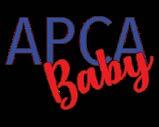
MUST BE EMAILED
CAMPUS LIFE TRENDS MAGAZINE IS A TRADEMARK OF THE ASSOCIATION FOR THE PROMOTION OF CAMPUS ACTIVITIES. ALL RIGHTS RESERVED. NO ARTICLES OR IMAGES OF ANY KIND MAY BE REPRINTED FROM THIS MAGAZINE WITHOUT THE WRITTEN PERMISSION OF THE ASSOCIATION FOR THE PROMOTION OF CAMPUS ACTIVITIES. ANYONE SEEKING PERMISSION SHOULD FORWARD THEIR REQUEST BY EMAIL TO:
LEADERSHIP SETTINGS
THEM FAIL
 elambert@apca.com
elambert@apca.com




Dear Friends,
In this editorial, I want to talk about the importance of gathering as a community. While the pandemic showed us that we can be resilient (and even exist for short bursts as a virtual community), it has also shown us that we are by necessity a live, gregarious profession.
At APCA we not only plan and hold events, but we also create the same atmosphere at our events that must be recreated on a campus to engage our member schools’ student populations. Without creating a live experience for students and advisors as an example of an engaged student life community, there is no model to replicate for the engagement professionals and their boards.
For instance, our Cooperative Buying system draws us together in a collaborative effort to save on talent, reduce travel costs, and develop networking systems that can be utilized long after the conference is over. Further, our shared experiences at APCA events take networking far beyond the LinkedIn profile and into the realm of friendship and comradery. The memories and experiences that occur at a live event cannot be replicated virtually.
Most importantly of all, APCA conferences give you the opportunity to see, hear, and participate in the process HANDS ON. You can meet the agents and artists, you
can discover the contracting process, make buying and negotiating decisions, and more in a LIVE format that encourages student development. That’s how engagement training should happen, with students being exposed to the process and participating with their advisor.
If you’ve never been to an APCA conference, please reach out and explore the possibilities that our fall events can offer you. You can find everything you need there to get your campus population engaged, retained, and entertained! Check it out at www.apca.com and make plans to join us today at one of our three fall conference locations:
• Houston, TX - September 30th - October 2nd
• Syracuse, NY - October 21st - October 23rd
• Lincolnshire, IL - November 11th - Novermber 13th
Till Next Time!
Eric Lambert

Take a deep breath and be flexible. Remember, this will be hard work and planning is essential. Ask for help and advice wherever you can. Anyone who has been involved in planning large events knows what you are going through and will be happy to help. Here are some tips to get you started. Enjoy!
Choosing the right artist can make or break your event, and there are many ways to choose. Attending an APCA programming conference is a great way to get started. You and your students can meet the artists and agents, begin forming relationships, and the cooperative buying at these conferences allows you to form blocks and save money. Agents are valuable resources in matching an artist with your particular student population, budget, and venue. There are agencies at APCA that focus on college artists and may know of someone appropriate for your campus situation that you would never have thought of yourself.
In choosing the talent for your big event, you may even want to survey the students on your campus as to what genre of music is most popular rather than asking for specific artists. You may even want to consider creating a selection criteria and timeline to help keep your planning committee on track.
Generally, you want artists who are willing to interact with the students and create a fun experience for everyone. A good rule of thumb is, if an artist isn’t personable and you have to sneak them on and offstage, you probably should not book them.
Contacting friends and colleagues on other campuses is another great way to get feedback on an artist. If no one you know has worked with the artist then ask the agent for references from other schools where the artist has performed.
Middle Agents, also called promoters, can be enlisted to help you plan your event. These folks can walk you through the process of putting an event together from start to finish and will even handle many of the details for you. Think of a middle agent like a wedding coordinator for concerts. A good middle agent should know your standards for artist conduct. They should also understand your venue constraints and help work with your date specific schedule, in case for instance, you do not hold events on weekdays.
Expect to pay for these services, however, as some charge a flat fee while others will charge a percentage based on the size of the show. Schools that only host one big show a year would probably fair better to use middle agents. They will not have the time or programming experience to acquire the skills to do it themselves. For those schools that want to host concerts regularly throughout the school year, they can build the recipe to do it themselves. If you have the time and determination to do the planning yourself, it will only get easier as you get more events under your belt. In the end, its up to you to decide how much you can take on yourself, or even if your budget allows for a middle agent as an option at all.
Venue selection is an important part of the process. First, you need to think about how many people are expected to attend and pick a venue accordingly. There are also costs to consider. If the venue already has a stage that
will accommodate your show, it will save you some money. The same can be true if the venue already has acceptable lighting or sound systems and adequate power. Keeping all that in mind, your first selection criteria should always be capacity. You can add staging and production equipment, but you cannot add to the maximum capacity of a building.
Large venues often employ technical directors who can be of tremendous help to you when you are planning your event. They know the ins and outs of their facility and can offer suggestions. If you do not have an appropriate venue on campus there are other options. Look around in your area for theatres or arena that are available for rental.
You will also want to do some research before selecting a date for your event. Try not to overlap other events in your area that might pull the same audience. Get a feel for which nights students will be most likely to attend a campus event. Some colleges have more success with events on Thursday or Sunday nights because the students leave campus for the weekend. It may take some experimenting to find the right formula for your campus.
Remember, the artist fee is just the beginning. There will be sound, lighting, staging, catering, hotel, transportation, security, power and labor expenses just to name a few. Take the time to look through the contract and get prices for all of the services you will be required to provide. Make sure that your budget will still be sufficient to do the show.

Ask for the technical rider immediately if you do not receive one with the contract. Production for some groups can be extensive, so you do not want to sign the contract without first getting a handle on the cost. Find a production company in your area and ask them to look at the technical rider with you. Have them talk with the artist’s tour manager to determine exactly what sound, lighting and staging requirements will be necessary. It is their job to understand the long list of equipment that may seem like a foreign language to you. Put the production company in touch with your physical plant or campus electricians to assure that any special power needs are addressed early. Depending on your location, you may need a generator. Your campus electricians and your production company can work together to make that determination. Also, a site visit to the venue is a good idea.
Contract negotiations come next. If you remember nothing else from this article, know that everything in that contract is negotiable until you sign it and nothing is afterwards. If the artist asks to be picked up in a rocket ship and you sign that contract without negotiating, then you better have a good connection at NASA. You’ll need it because you are legally obligated to provide that rocket ship. Read all contracts carefully, and mark through the items that you cannot provide or need to discuss. Make notes in the margins and add addendums if necessary.
Talk to the artist’s manager or promoter and get all your agreements in writing. The agents do this everyday and will help you through the process. Read and negotiate any merchandising requests. You may be entitled to a percentage of the merchandise sales. The venue may take a cut of merchandising and the artist certainly will.
A production company can be a valuable resource to you throughout the process. Ask them questions and enlist their help. They do events for a living and should have knowledge about many aspects of event planning. A good production company will be honest with you about what equipment is necessary to maintain the quality of the event in your space. They will also serve as your greatest ally in negotiating equipment needs with the artist tour manager. Ask the production company to look at several different riders to see approximately what each would cost, as this might help you decide which artist best fits your budget. Use their experience to your advantage.
Hospitality is extremely important. In fact, good food can overcome bad moods and other frustrations of the day. This is not an area where you should scrimp to save money. Cold cuts and snacks are great, but are not dinner. Dinner needs to be a hot meal, and pizza does not count. Keep your volunteers from eating the artist’s food, as it is frustrating to an artist or crew member to come offstage after sound check and find the volunteers eating their dinner. If your campus does not have a catering service, contact a local restaurant or caterer to provide the meal. You might even get them to donate this service in
exchange for advertising or a free vendor booth. Finally, remember that the hospitality rider is a part of the contract so if you sign it – you are obilgated to provide everything listed. This may include alcohol. If your campus does not allow you to purchase or provide alchohol then remember to cross that off the contract BEFORE you sign.
Should you be required to provide rooms, hotels might discount or donate rooms for advertising as well. Make sure to find a nice, clean place that is not too far away from the venue. The staff at the hotel should be helpful but discreet with their guests. If it is necessary to transport the artist or their staff, be very selective in the student or staff member who takes on this responsibility. These folks are used to being around strangers and will discuss all manner of topics among themselves. This can be very eye opening for a student and they need to be professional enough to handle it. Remember that these folks are on the road for the vast majority of the year. Anything you can do to make them more comfortable will be greatly appreciated.
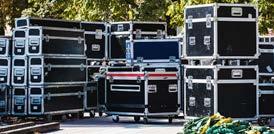
Volunteers are a great way to get students involved and cut costs. You do not have to wait until the day of the show to start enlisting their help. Students can be involved in almost all aspects of the planning. A professional staff member must obviously handle some of the responsibilities. Student leaders on your program board can be capably trained with moderate supervision to handle a majority of the workload, and what a wonderful experiential learning experience for them. Assign your more experienced students as committee heads to train the new volunteers so the knowledge gets passed on.
Make sure students are prepared to do some manual labor and dress appropriatly. Closed toed shoes are a must, loose hair should be tied back and dangly jewerly removed. Most artists who play colleges will be used to working with student crews; however, some positions will require professional labor . Consult with the tour manager and the production company to determine which show positions can be filled by students. Students
cannot serve as show riggers. Riggers are used to hang or “fly” equipment and the job requires specialized training. You may also need to hire an electrician to make the power tie in. Your production company can either provide this specialized labor or help you find it.

When it comes to student volunteers, recruit three times the number of volunteers you think you will need to account for the “flake factor”. Screen your volunteers carefully, especially the ones who will be working around the artists. Make sure they can behave professionally and refrain from asking for autographs, handing out personal demo tapes or otherwise embarrassing themselves and you. Volunteers need to understand they are at the event to work, not to meet famous people or see a show for free.
Unloading trucks and pushing equipment is neither easy nor glamorous. Make sure to find ways to reward your volunteers. You might want to ask the artists to sign posters ahead of time for her to hand out to the volunteers. You might also find a special time for the volunteers to meet the artists. This needs to be arranged ahead of time with the agent. Staff t-shirts work well, both to identify your volunteers and as unique souvenirs. Finally, never, never underestimate the power of free food. Again, just make sure your volunteers are not stealing it from the artist’s catering tables. Whatever ways you find to say “thanks”, just remember these volunteers are working while everyone else on campus is playing.
Sorry, You’re Not on the List… Security should be well thought out in advance. Talk with your university risk management office. They can advise you about any special permits you need. Consult with your campus police and get them onboard early in the process, so that they can help you come up with a security plan. Many campuses hire professional security services that have experience handling large crowds at concerts. Make sure to hire only security companies that are licensed and bonded. These services will work in conjunction with your campus police.

There is good news and bad news in the most recent statistics regarding enrollment in higher education. The good news: more Americans are attending college. The bad news: only about half of those students will end up with a degree.
How do you get students to stay in school and graduate? The National Survey on Student Engagement has found that students who are active and engaged on their campus are more likely to stay in school, get better grades, and to graduate.
So, how do we get students engaged? The answer isn't easy, but it is simple: retention-based programs and events.

Retention-based programs can engage students in a number of ways. First, we need to utilize what we call "Front Loading". This refers to having a large number of events and programs early in the term to get students active on campus. Having a number of opportunities to participate in events increases the possibility that students will attend programs. It also releases the stress students feel due to starting or returning to college and the beginning of the academic year. These programs also provide opportunities for student development as students increase their interpersonal competence. In addition, many of these programs will have an educational component. Students can have fun and learn simultaneously.
How to utilize student activities programming as a means of increasing student retention, enhancing enrollment, and improving student persistence and completion (graduation) rates.
Second, these retention-based programs need to appeal to both traditional and non-traditional students, both residential and commuter students. Different student populations have different social needs, and we need to recognize those differences in our program offerings. Presenting programs that appeal to non-traditional and commuter students will increase their campus engagement in a similar was as traditional and residential students are engaged.
Third, we have to ensure that students attend and participate in these programs. One frequent failure with student activities across the country is poor marketing and promotion. While publicizing and promoting doesn't guarantee that students will attend, the opposite does apply. Students will not attend an event they are not aware is occurring. We have to utlize the most effective promotional methods- high tech and low tech- to make students aware of the programs being presented.

Fourth, we have to embrace "distance learning" and students who are pursuing their degree online. These online students also include students

on campus who are involved in "gaming" and "esports". We know how the impact of computer games has grown dramatically. As quaint as the early "Pong" game seemed when Super Mario Bros came along, those early games had little impact except on the holiday economy when purchased as gifts. USA Today has noted that avid gamers often call in sick to work- or miss classon the days following the release of a popular game. And esports is growing exponentially, as colleges and universities have gone beyond esports "clubs" to actually offer scholarships and intercollegiate competition. We have to engage off-campus students, and esport students, too.
Finally, we have to do assessment. Peter Drucker was right when he wrote, "What gets measured gets managed". We don't do assessment just because our Dean or Vice President requires it. We do assessment to see what works, what doesn't work, and how we can make our programs and events better. This means assessing the learning that takes place at programs and events. It means assessing if students enjoyed the event (making them more likely to attend future events). And it means assessing how students learned about an event, so that you can increase attendance by improving your marketing methods.


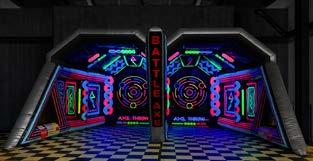

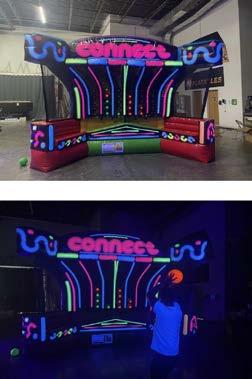





You may need to use a crowd barrier to restrict access to the stage. This protects not only the performers and equipment, but also your students. Some artists will require one; some production companies may as well. Even if the artist does not require one, you should discuss this option with the campus police and security to determine if it is necessary.
If you decide to use a crowd barrier, your security or production company should have a source. The area behind the barrier should be staffed by police and professional security trained to deal with the crowd. This is not a good place for students. If your security plan calls for the use of metal detectors or other security searches upon entrance to the event, allow extra time for this process. A well thought out security plan and professional, trained personnel will head off many problems before they begin. If something does occur, good security ensures the situation will be handled quickly with minimal disruption to your event.
Insurance is available specifically for events. Your campus risk management office may require it and can help you with the process. Even if it is not required, you should do some research. Insurance typically falls into two categories. The first is weather insurance. This can cover you in the event of rain at an outdoor event. You will need to provide the insurance company with the date, time and place of your event and the amount of coverage needed. Your artist, production company and other service providers still get paid even if the event is cancelled, so make sure the amount of coverage will pay their fees. You should pick a rain tolerance threshold to determine the amount of rain that you can tolerate before your event will be shut down. The insurance company will provide you a rate based on historic weather patterns in you area. You can add a clause to cover natural disasters such as hurricanes, tornadoes, floods, earthquakes etc. This may be necessary even for indoor events.
The second type of insurance is short-term liability. This covers you in case someone is injured at the event. You can also get liability insurance to cover loss or damage of property and equipment. Liability insurance rates are based on a number of factors. The number of attendees and type of act will certainly affect your rates and even the availability of insurance. There are a number of insurance agencies that specialize in event insurance. Find one that is licensed in your state and they can walk you through the process. Although there is a cost associated with event insurance, it can buy you tremendous piece of mind.
Remember that no matter how much you plan or how many times you have done large events, something unexpected is sure to happen. Try to build time into your event schedule for unexpected delays, logistical problems and coping with demands for counting out brown M&Ms. It happens to all of us. So hit the ground running. It’s never too soon to start planning your next BIG SHOW!!!
Outdoor events can also be a good option. You are less restricted in the number of attendees. Outdoor sites work better for festival type events where you have multiple stages, vendors, inflatable and other attractions at the same event. There will be some extra expenses, since you will have to bring in a covered stage and all of the production equipment. You may have to rent a generator, think about restrooms, concessions, parking, and any number of other amenities that come with an indoor venue. Noise ordinances will be an issue to consider, so try to direct the stage so that the noise is playing into campus. If you have to play towards a neighborhood, then make sure to get the appropriate permits so your event does not get shut down. A rain site will be necessary. Establishing a relationship with the meteorologist at your local TV or radio station can be helpful when you are faced with making a rain call. They can advise you on incoming weather and how it will affect your site. Most artists and production companies will insist that the rain call be made before any equipment is set up because there will not be time to move it later. You will also find that both artists and production companies reserve the right to stop playing and shut down the equipment if they deem the weather to be a hazard to their equipment or personnel. Don’t let all that scare you. There are advantages to outdoor events. After a long winter students are often thrilled to get outside in the sunshine and play for a day. So an outdoor event can also be a great event. It just takes a bit more planning, preparation and flexibility.



It must be difficult for students to market events that don’t involve celebrities on campus and hope that their peers will show up these days. I arrive to some campuses ready to perform for a beautiful crowd and the advisor tells me it's "hit or miss with students showing up". This statement tells me how much work wasn't put into creating a buzz for the event. Entertainment shines from screens at our fingertips, so putting on clothes, traveling to a venue, and participating in a live performance doesn’t look/ sound as exciting as it once did. I hate to start with the phrase, “back in my day”, but it’s fitting because things were much different not too long ago.

As students, we were excited about speakers and artists who visited our campus because it broke up the monotony of studying and schoolwork. A paper flyer, laminated poster, and well-constructed email blast was a sure way to fill a room with enthusiastic spectators back then. Modern times have made way for social media to disconnect us while selling us a connection. We tend to walk around with our eyes buried in our phones like ostriches sink their heads in the ground. By doing this, we avoid human interaction, flyers and posters become invisible, and the world around us disappears. How do you market an event to this type of campus?
My story may be one that can help you see the light at the end of this seemingly dark tunnel. It forwards the “grass-roots” idea of building something from

nothing and believing in things we cannot yet see. “Ugly flyers and good conversation” resulted in successful events for me, and this anecdote could still work for you.
My story starts with being depressed and stressed in my dorm room and needing to get my voice heard. My childhood trauma caused me to withdraw into myself and write my frustrations out in poetry. When I arrived at the University of North Florida, nothing attracted me, so I decided to create a space for myself and others. I developed an open-mic event called “Inword Xpressionz” where other students had the opportunity to perform. When I started the event, I had to create a club on campus to reserve room space. A social club was nothing that I desired, but I did what I needed to do to satisfy administration’s rules; I wanted to make sure
I gave the best effort to my vision. It’s important to note how resilience played a strong role in my journey. I wasn't going to allow anything to stop me from reaching my goals.
As a Graphic Design major, I used my (terrible) designs on plain paper to create flyers and printed them on the school’s “best” printer. The prints were ugly, flimsy, and crookedly cut, but they existed as something to get the news out about my event. I was unpopular and more of an introvert then because I was dealing with past traumas that followed me and I sometimes wore them. Speaking to strangers was
Storyteller Odd?Rodsomething I had to overcome if I were to have an audience, so I had to step away from my comfort zone. I pushed myself to greet people around the campus like I already knew them. I was intentional about creating some sort of memorable interaction with them so that when I saw them again, I could engage them about upcoming events. I passed out flyers and spoke to people who looked approachable as they passed. They were receptive and most of them accepted a flyer from me. The school gave me a small budget for the club, and I used it to order four pizzas for the event. On the flyer, I advertised that there would be “FREE FOOD” and I knew it would draw people in. I wasn’t trying to feed the whole campus, but free food while it lasts is still free food! After all the hard work I’d done with advertising and preparing this event, it yielded twelve audience members, and I was discouraged and disappointed in humanity. Nobody had showed up for me, but I still held the event and made sure it was entertaining for the small audience there.
It was the good responses from my first event that awakened a fire in me to have another. Before I knew it, the word spread about how awesome the show was. If you provide for them a quality event, the next event won’t be as hard of a sell, and they will bring more people. Small things made my open mic different from others like how I never had a sign-up list for performers. Each presenter would feel less nervous to perform because they took the stage at their own will. Performers would stand up at random moments like blooming flowers to approach an empty microphone and share their work. The room felt more liberated and less judgmental because of the autonomy of the structure. Everyone looked forward to this event which started with a simple thought and determination to see it through. My ugly flyers may have worked, the food may have worked, but it
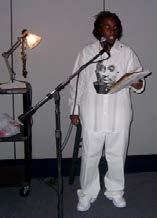
was certainly my presence amongst the people on campus that was the key factor in my success. There was no social media.

There’s the answer, marketing your event requires that you to know your audience personally. We must walk the campus and meet our audience if we want them to show up for us. Engagement means that we should try our best to avoid having strangers on our campus; it’s important to attempt some type of connection to everyone we come across. Not only does this build our audience, but it also makes the students feel a part of their campus by showing them that we see them. Visibility arrives from acknowledgment and that goes a long way for people faced with the stresses of being a student. A greeting with a smile says “I see you” to a person. They then feel more inclined to attend our events because we’ve acknowledged them. As marketers, it’s important to provide the personal connection with others even if the event does not connect. I passed out ugly fliers, but I also facilitated sincere conversation and met cool people that provided a beautifully engaged audience. It’s a win all around to be more social beyond social media. By the time I’d graduated, I had a monthly audience of two hundred attendees that fell in love with being together for a great show. I developed my stage presence as a host and a speaker, and I released stress by sharing parts of my life.
In summary, having a passion for the event you market is essential and then getting out to meet people is key. Emails are ignored these days like phone calls, and in-person connections have been lost to social media scrolling. It turns out that good ole’ dedication and verbal communication is the answer we’ve been searching for to return our audiences to their seats. I wish you all the best, and I hope my story encourages you to set the tone for your student body.
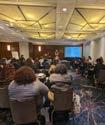



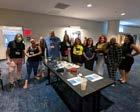

















The legacy you leave, both through your programming's impact on your current students and the traditions you leave future students, can be a very valuable resource. What steps are you taking to ensure that your programming has impact and relevance for future generations? This keynote reflected on the legacies left by Alexander Hamilton, Lin-Manuel Miranda, and others to help establish a direction of vision and clarity of goals for your organization's legacy.

With the help of your contributions, we raised over $9,000 for Broadway Cares Equity Fights AIDS!!!
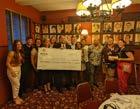
You may be wondering what a 30N30 is and why it's something necessary on campuses. 30 events in 30 days seems like a major task, but I promise the 30N30
change your campus involvement and engagement and set the tone for a successful year!
I am Cheyenne Olson, Student Activities Coordinator at Hillsborough Community College, SouthShore Campus in Ruskin, FL. Over the past two years, I have strategically planned a 30N30 to help engage and retain our new incoming and returning students on SouthShore Campus. These events have proven to be the most successful with these helpful tips I’ve learned along the way!
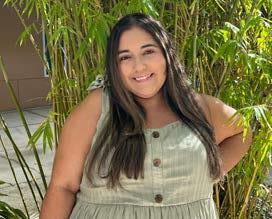
Have a Committee. Each year I gather together department heads or anyone on campus who is interested in being a part of the first 30 days of involvement on campus. This committee can meet together to discuss ideas they may have to help organize the calendar and events happening on campus. Make sure there is representation from key resources for students!
Involve Your Campus Departments & Organizations. Having your departments and different organizations on campus do events with SGA can highly benefit the students! This will let the students, new and returning, know what resources are provided by the college or university. This can help bring awareness to all students and help them understand where these departments and organization can be found.
Plan Your Student Life/SGA Events First. Student Government has the biggest calendar of all departments on campus. It’s important that you plan your events for

student life first. This will also help when your departments are picking dates for their events so there is no overlap! My pro tip is having a list of the dates and filling them in with your events you would like to host.
Fill in Your Calendar with Department Events. Filling your calendar with events from your Career Resource Center, Academic Success Center, and Counseling can help students know the different resources on campus! This is a great way to incorporate co-curricular into events. How about a mental health open conversation with your campus counselor? Or speak to the writing tutor about hosting a MLA and APA format workshop? There are so many possibilities when you put together a 30N30 to help make it fun and educational!
If Departments are Nervous to Host Events, Lend a Helping Hand. We are the PROS are making an event happen. Sometimes departments or organizations don’t even know where to start. For example, the Academic Success Center doesn’t host many events on campus and is hidden from the students. We helped them with supplying a prize to pass out to students if they sign in and make an appointment to see a tutor! It’s a great way for the students to be incentivized to step foot in the door.
Create a Calendar of Events for the 30N30. This is great to market your whole list of events to the campus! Share this calendar of events to your Instagram and Facebook! Take note of your student activity on campus. At SouthShore we host events during the 30N30 Monday through Thursday!
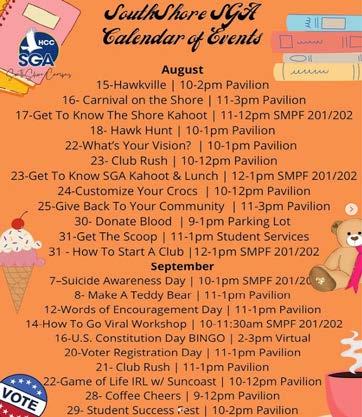
Incorporate Club Rush as a Recurring Event. This is great if you are wanting to add an event to your 30N30 calendar and want to help your student clubs and organizations find members in the beginning of the school year. If you have
campus clubs that need help, having a monthly club rush can really help engage and retain students!
Host FREE Events with a Purpose.
It is 100% possible to host a FREE Student Government Event. From having a club rush, to learning more about Student Life with a Kahoot! and a free bag of merch - it’s possible to get students excited and in the door for little to no cost. Free events can be partnering with your math department and hosting an event on how to understand using a calculator.
HAVE FUN! It’s important that you have fun and make memories! Take lots of photos and have fun with your students!
I hope these tips help you find inspiration to get your 30N30 going on campus! It’s so much fun to see everyone collaborate and work together to make an impact on the students' lives. I hope to see you try it out in the Spring!
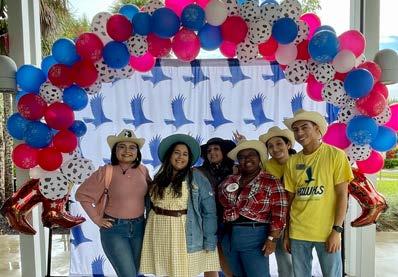
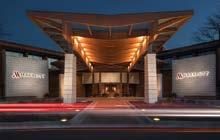


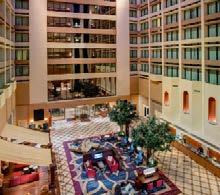
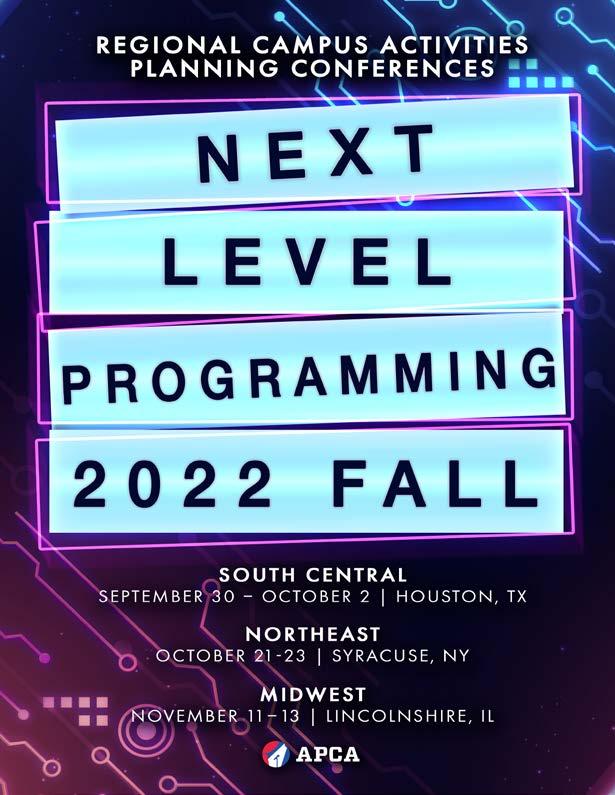


Learning about leadership characteristics through a camera or smartphone lens makes sense to me. Because I practice photography daily and regularly speak about leadership practices with different organizations, the relationship between both subjects is an ongoing focus. Each time I take out my smartphone or camera to take a photograph, there is a leadership lesson to learn from the process. This time of year, the highlight that comes to mind is “check your leadership settings.”
Students transitioning to campus schedules face multiple challenges and stressors during the late summer and early fall. Finding a harmonious balance between the rigors of academics, personal time, and work schedules can be demanding. And the load can be even heavier for the student leader.
Many professionals also struggle to wear multiple hats in their work schedules. How you approach that effort as a student leader can help lay the foundation for successfully facing future challenges in a society weighed down by multitasking.

Each time I pick up my smartphone or camera to take a photograph, I have the option of leaving the device on the default setting of “auto mode.” In practice, this will typically produce an average image, but it rarely gives me the detailed photograph I am searching for without adjusting the image afterward with apps and filters. To be effective with my camera, I must check my camera settings before photographing. The same is true in leadership practices.
Consider your overall well-being as a leader. You probably know how many hours of sleep you require each night to function well, the make-up of your ideal diet, and how much downtime is necessary to recharge your mental and
physical battery. When these daily practices are off, how long does it take for your academic and leadership roles to suffer? Pay attention to the details of these behavioral practices to avoid operating on auto mode setting.
The first photograph was taken using an auto mode camera setting. This approach fired the flash to improve the image in an average way. The results are disappointing. The same subject in the second photograph was shot using the camera's manual mode by checking the settings for the results I was searching for. This process creates a more pleasing appearance highlighting vivid colors that contrast with the background.
Check your leadership settings, regardless of where your work road takes you.
Sure, I can get by on auto mode with less balance in my photography and work life. Maybe you have experienced the auto mode setting in your leadership roles and found yourself skipping meals, having poor sleep habits, and fighting off signals to take a break. How does an auto-mode response manifest itself in your leadership schedule?
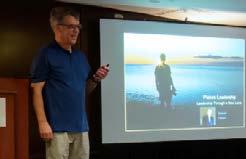
Does it take more effort to regularly check your leadership settings and not operate on continuous auto mode? Of course, it can, but the benefits can be immediately apparent. There was a time when my camera was always placed on auto mode, primarily because I was unfamiliar with the other settings, how they worked, and the benefits of using them. However, now that I better understand the operation of my camera and how photography can shine a light on leadership behaviors, it is rare for me to return to letting the camera do any thinking for me in auto mode.
Leadership is about serving others. Because of this, it may sound contradictory to start the semester with your leadership focus on checking your settings and taking care of yourself first. This approach makes me think of the flight attendant’s instructions before takeoff each time I board an airplane. “When the oxygen masks fall, place your oxygen mask on first, then help a family member with theirs.”
A recent example comes to mind. The last APCA conference I attended was memorable for many reasons. The recent loss of a friend days before the event had me arriving at the conference already tired and a bit stressed. And my diet is typically altered when traveling. The sights and sounds of a unique destination make me want to “take it all in,” even if I only have a few days to explore.
On the last day of the conference, during a presentation, I experienced something that had never happened during my speaking career. I blanked out for words during my final presentation. (You may relate to this if you’ve been in the middle of something and found yourself forgetting what you were doing.) My picture exposure to the conference turned dark and out of focus, even though I was operating in auto mode. Once the gathering ended, I retreated to a friend’s house and immediately slept for twelve hours. I needed every hour of that rest to recharge. The conference was extraordinary, and I wonder how much more I would have taken from the experience with a fully charged battery.
Operating on auto mode setting in leadership can be misleading because, at first, you may be completing tasks and fulfilling duties in your role. But, like my attempt to power through at the conference instead of taking extra time to rest, neglecting your settings can have a way of sneaking up on you. Ignoring these signs can then creep into different areas of your life beyond leadership. And don’t expect those around you to immediately recognize or appreciate that you are not operating at an optimal setting. So many people around us are over-extended themselves. An observant advisor may recognize your need to back away from a project for a break to regroup.
Checking your leadership settings and the settings on your phone’s camera before you take a photograph may feel a little strange at first. However, the benefits become clear and recognizable in the comparison. Once you explore this process, you may never return to auto mode again.

Daniel is a speaker and award-winning photographer. His latest focus blends leadership and photography skills to help students explore leadership, create fun service projects, and prepare for career development.
In a NY Times survey of school counselors earlier this year, the following statements were made about today’s students:
“They have less stamina; more frustration; less flexibility; less effort; less perseverance; more escape and avoidance behaviors.”

“If what they are asked to do requires critical thinking or more than 10 minutes of effort, many students struggle, become frustrated and refuse to do the work.”
I won’t get into a discussion about the myriad of reasons as to how we got here. More importantly, what can we do to create space and opportunity to help build back skills of perseverance, resilience, and hope?
Let them fail. That’s right, fail. But make it fun.

Here’s how. As student activities organizers, you’re in a unique position to offer learning opportunities outside the classroom. Things students want to learn for the fun of it. A chance for students to try new things, fail, and try again. From choosing what programs to offer to how it’s marketed to the way it’s run, you can create a space for them to experience messy struggle. And come out knowing that it’s not only okay, but sometimes a necessary step.
What kinds of programs am I talking about? Ask your students for ideas. Questions like, “what’s something you’ve always wanted to learn, but didn’t have time for in school because of your academic classes?” We had a photography class in my high school that I never had time to take because of AP classes filling my schedule! Or you could ask, “What always looks fun or interesting, but seems too hard to learn?”
Generate a list of these skills and you have a starting place for a workshop series. Skills they want to learn that feel just out of reach.
As you begin seeking out instructors for the workshops, ask questions to find out where their focus lies. You want people who embrace failure as part of the process. If they are promising perfect finished masterpieces or performers by the end of the session, you should have red flags going off in your head.
In one of our workshops, we teach juggling and never promise that everyone in the group will be juggling by the end of our workshop. They will know the steps and if they keep practicing, they will eventually get there. Being
able to embrace the drops is more important than keeping 3 balls in the air.
When you market the workshop, we recommend emphasizing the skill they’re going to be learning, but not on the mastery of it. You want them to come to have fun trying - so highlight the process of learning the skill. And the fact that they’ll meet other people interested and probably equally uncoordinated in it. This sets the tone for the playful space you want to create and will be more welcoming to students that need it.
If you’re running the workshop yourself and even when you are running regular meetings of student leaders, here are a few ways that we’ve found to be effective in creating a more inviting space for dropping the ball (literally and figuratively).

Model It: As someone who has struggled with perfectionism myself, this one has been tough for me. When demonstrating in front of a group, I would typically only want to do things that I knew I could perform well. But at some point, I realized the power of demonstrating dropping. It gives permission to others in a really visible way. I also show the tricks that I’m working on to indicate that there’s always an edge to push - more room to grow, learn, and be messy.
With our line of work, the drops are really visible. What could that mean for you? Maybe it’s acknowledging when you don’t have the answer to a question and have to ask for help. Or maybe you share a story of a past mistake, how you struggled, and what it taught you.
Shift Focus: In a juggling workshop, the students want to focus on three ball juggling because that’s the goal (and it looks cool). But we actually spend most of the time mastering good throws and catches with one and two balls. The result you want will eventually come when you focus on the steps needed to get there. Stressing out about obtaining a “perfect” result distracts a learner from doing the messy work needed. In other words, focus on progress not perfection.
So if your group is planning a big event, break it down. What are all of the small parts that you can celebrate as you complete them? Or isolate from the rest if it goes temporarily off track?
Get Curious: Speaking of going off track - as things inevitably do. So what then? Instead of pointing fingers and blaming each other, get curious. When a new juggler drops, the first instinct is to pick it up quickly hoping no one saw it. And usually the inner voice kicks in with, “I’m so uncoordinated - I’ll never be able to do this.” With so much judgment, a learner doesn’t have a way to make it better. No wonder they don’t want to persevere!
Getting curious means looking at the drop and asking, what hand threw it? How far away from my body is it? What does that tell me about adjustments I can make next time? That gives actionable information. Let’s say your students plan a program and no one shows up. They can say that was “a failure” or “a dumb idea” and you never offer it again. Or you can ask questions like what else was being offered at that time? When are our best attended programs? Should we do a survey of student interests? From there you can make adjustments to the program and offer it again.
You’ve planned the program, you’ve created the space, now it’s time to have fun failing. When students feel comfortable allowing themselves to be messy, they get to show up authentically. They don’t have to perform, they just get to play. We’ve seen transformations happen in a range of settings, but corporate workshops really stand out in my mind. People come in buttoned up in suits. Within a short time, not only are the jackets off and ties loosened, but the interactions are freer and formal personas gone.
It allows individuals to drop what Dr. Brown calls armor - the thoughts, emotions, and behaviors we use to protect ourselves when we don’t want to be vulnerable. She writes, “we must be guardians of a space that allows students to breathe and be curious andexplore the world
and be who they are without suffocation. They deserve one place where they can rumble with vulnerability and their hearts can exhale.”

In the last few years, we’ve started using Flop Balls in workshops - yes we put “flop” right in the name! A little more accessible than juggling, but still the same learning of skills and dropping along the way. We recently heard from a student at Hanover College:

“I love the connection that comes along with playing Flop Ball. I've never felt so connected to my fellow RAs than when we played into the late hours of the night, talking and laughing.”

This playful kind of skill building eventually leads to learning the skill (even if that’s not the focus) and that makes a powerful impression. A person never forgets when/where they learned how to juggle or play guitar. And don’t you want those meaningful moments to happen in your campus community?















Before a performance, Harry Houdini was notorious for performing a stunt in the middle of town for all to see. In 1915 he performed a public escape right here in Kansas City that drew over 5000 people to downtown. The result of his efforts each time? SOLD OUT SHOWS. Houdini may have been a master of magic, but he was also a master of marketing, even if you didn’t know it.
In today’s fast paced world, you are always being marketed to. You may not be able to avoid such a thing, though you can certainly learn from it and better promote your own endeavors. Was it sold out or was it lightly attended? Do you have any idea why? Chances are, it was due to the marketing. So let’s talk about how to use marketing to your advantage and the pitfalls to avoid.
Simple answer? Always. A successful event is typically marketed before, during, and after the fact.
Before - The most obvious form of marketing happens prior to an event. If no one knows it will happen, nobody knows to show up. The less obvious part is how to do that marketing well!
Passive vs Active marketing - Passive marketing is the act of casting a wide net and hoping to catch something. Flyers, mass emails, and announcements (social media) make up a good portion of these marketing tactics.
Active marketing however is more direct and often verbal or face to face. It’s asking your friend to come to your concert, it’s reminding someone of the lecture happening today, it’s hand delivering a ticket.

It takes more work, but often yields higher returns. When asked directly, there is more of an obligation to attend. When given a physical ticket you don’t want it to go to waste.
Both forms of marketing are key to building a good turnout. The wide nets will catch some, and if added to the guaranteed audience you brought in through active marketing, the event only grows.
During - You may not realize it, but you can and should be marketing during an event.
1. When guests arrive it should be easy to spot signs to the event. This not only makes it an easy experience for them, it also garners the interest of passersby.
2. If it is indeed an open event, don’t shy away from fanfare or visibility. Afterall, a crowd draws a crowd.
3. A few simple announcements prior to a performance gives others nearby a chance to hear what’s going on and decide to participate.
After - The event may be over, but your marketing should not be!
1. If you aren’t telling this audience about the next event happening on campus, you’re missing out on a valuable resource. Repeat attendees!
2. If you’re doing something like a raffle, save it for the end! People love to wait around and see what happens, but once it’s done their interest is too. So hold off.
3. Finally, social media posts can be gold. Create an incentive or simply a habit to ask your audiences to take photos and tag your organization in them.
All forms of marketing are improved by the same tactic: “targeted marketing”. A poster for a magic show hung up on a street sign is certainly “marketing”. That same poster hung up outside the classroom the magic club meets at however, is targeted marketing. The more refined you can be in where your passive marketing sits, as well as what it advertises, the better a return you can expect.
Even changing key words based on where a poster or email is going can matter. A Theater department may get excited to hear this poet appeared Off-Broadway, whereas the English department may be fascinated by their body of published works. Same ad, different keywords, better results. Active marketing can easily be targeted as well. Have you gathered the emails of those who attended similar events? If not, you’re missing out on a demographic that has shown they attend events.
Nothing feels less engaging than receiving an ad for great insurance rates for a private jet that I do not possess. I clearly was not the person they had in mind for this post, and I’ll probably be blocking that company from marketing to me. Not everything you do needs to be targeted, but it certainly helps to at least know who's likely to see the information you’re presenting.
Understand spam habits for emails. Google and lots of other email systems can flag mass emails (even from your professional school emails) as spam and they will never reach your intended recipients. Just make sure you’re avoiding any unnecessary roadblocks!
Do not expect any one form of marketing to be enough! If you do 5 different tactics and they all bring 10 people, that’s great. If you only do one tactic and it falls flat, you have no other tactic to lean on.
Ask yourself or your team the following questions:
• Could we be targeting this event's marketing better?
• Could we be reaching more people?
• Have we built a strong culture of attending events on our campus?
Depending on your answer, find out how you can best improve. You may not be Harry Houdini performing an escape over downtown, but you can certainly work some magic to better promote your events!

No event happens without an audience, and most audience's don't happen without good marketing!
So let's talk about some tips on marketing before, during and after an event. (hint, you can always be marketing somehow)


